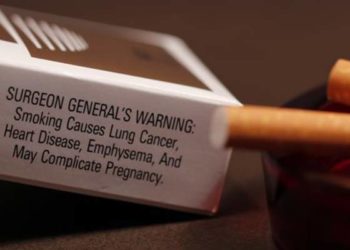Differences in sudden unexpected infant death rates reported between states
1. National sudden unexpected infant death (SUID) rates had the steepest decline during the 1990 to 1998 study time period, followed by slower decline during 1999 to 2015.
2. Comparing SUID rates from 2000-2002 and 2013-2015, locations with the greatest decline in SUID rates included District of Columbia, Colorado, and Wisconsin. States with the greatest increase in percent change included Alaska, Arizona, and Alabama.
Evidence Rating Level: 2 (Good)
Study Rundown: The term SUID describes the sudden and unexpected death of a baby < 365 days of age without an identifiable cause. Sudden infant death syndrome (SIDS) and accidental suffocation and strangulation in bed (ASSB) are subtypes of SUIDs. SIDS is defined as a sudden infant death that cannot be explained even after autopsy, review of the death scene and the decedent’s clinical history. Since the 1990s, there has been a general decline in SUIDs, likely attributable to federal and state safe infant sleeping interventions as well as changes in medical examiner diagnostic behaviors. Despite this decrease, there has been little characterization of regional variation which could identify states in need of greater intervention and those that may serve as a model for SUID reduction. The purpose of this investigation was to identify national and state-level trends in SUID rates (deaths per 100 000 live births) from 1990 to 2015. This study demonstrated a steep, nationwide decrease in SUID rates by 44.6% from 1990 to 1998, followed by a slower decline of 7.2% from 1999 to 2015. The national SUID rate declined from 154.6 to 92.4/100 000 live births from 1990 to 2015. From 1990-1998, the rate of SIDS also significantly declined by 50.9%, with a smaller decline of 35.8% occurring from 1999-2015. In contrast, the rate of ASSB significantly increased by 30.2% in 1990-1998, with a steeper increase of 183.8% from 1999-2015. In comparing percentage changes (PCs) in SUID rates for the periods of 2000-2002 and 2013-2015, 7 states demonstrated a significant increase while 11 demonstrated a significant decrease. Limitations of this study included reliance on information from death certificates, which lacks contextual data pertaining to external risk factors for infant death. Additionally, if the cause of death on a certificate was coded as “pending” and the investigation was not completed in a timely manner, the cause of death was conventionally amended to “Unknown” status, creating coding inaccuracies. Despite the national downward trend of SUID since 1990, there are still multiple states where SUID rates continue to increase. This data promotes the need for further studies that seek to better understand what interventions have the greatest and least impact on reducing SUID.
Click to read the study published today in Pediatrics
Click to read the accompanying commentary in Pediatrics
Relevant Reading: Variations in cause-of-death determination for sudden unexpected infant deaths
In-Depth [retrospective cohort study]: Data for this study was derived from the United States’ Compressed Mortality File, a repository of data logged through the National Center for Health Statistics. Rates of SUID and SUID-subtypes, which included SIDS, Unknown, and ASSB were calculated, as were percent changes in rates of these entities from 1990-2015 and 1990-1998. Data were compared during 2000-2002 with 2013-2015 at a state level. From 1990 to 2015, the SUID rate declined from 154.6 to 92.4/100 000 live births. From 1990-2015, the PCs for SUID, SIDS, Unknown and ASSB were -40.5 (95% CI: -42 to -39), -70.9 (95% CI: -72 to -70), 45.1 (95% CI: 39 to 51) and 671 (95% CI: 619 to 725), respectively. From 1990-1998, the PCs for SUID, SIDs, Unknown, and ASSB were 44.6 (95%CI: -46 to -43), 50.9 (95% CI: -52 to -49), -14.1 (95% CI: -20 to -8) and 30.2 (95% CI: 11 to 53), respectively. From 1999-2015, the PCs of SUID, SIDs, Unknown and ASSB were 7.2 (95%CI: -10 to -5), -35 (95%CI: -38 to -34), 4.6 (95%CI: 0 to 10, not significant), 183.8 (95% CI: 166 to 204). In comparing the 2000-2002 and 2013-2015 period, the greatest, significant declines in SUID occurred in District of Columbia (-44.5%), Colorado (-40.8%) and Wisconsin (-37.8%, p < 0.05). States with the greatest, significant increases included Alaska (37.5%), Arizona (34.9%) and Alabama (31.4%). In comparing the 1990-1992 period with the 2013-2015 period, Louisiana and Alabama were the only states without a reduction in SUID rate.
Image: PD
©2018 2 Minute Medicine, Inc. All rights reserved. No works may be reproduced without expressed written consent from 2 Minute Medicine, Inc. Inquire about licensing here. No article should be construed as medical advice and is not intended as such by the authors or by 2 Minute Medicine, Inc.







